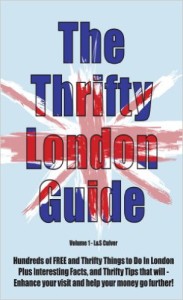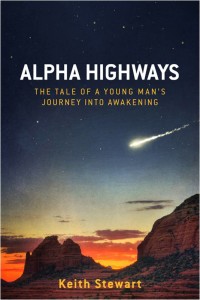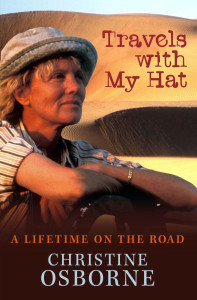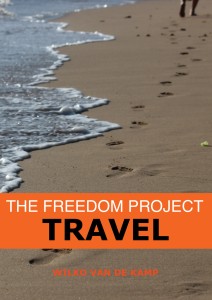L&S Culver
Oct 12, 2015 | 1st pages, Travel

London Views
Buildings with Amazing Views of London
City Hall London SE1
City Hall is the headquarters of the Mayor of London and the London Assembly. It was designed by Norman Foster and opened in July 2002. At the top of the ten-story building is an exhibition and meeting space called London's Living Room it has an open viewing deck with views across the capital it is occasionally open to the public.
Admission FREE
Interesting Fact City Hall
The carpet covering the floor at City Hall is The London Photomat it is an aerial view of the whole of Greater London, at a detail precise enough to pinpoint individual houses and buildings.
Hays Gallery Hays Dock London SE1
Hay's Galleria is a major riverside tourist attraction on the Jubilee Walk on the south bank of the River Thames. The Galleria’s River Walkway has great views of the Thames, Tower Bridge the City and more.
Admission FREE
Horniman Museum London SE23
The Horniman Museum also has great views of London. If you visit don’t miss the sundails in the Garden.
Admission FREE
London Sky Bar London SW1
Situated within Westminster's iconic Milbank Tower, The London Sky Bar offers panoramic views of the capital from four floors of London's tallest riverside building on the Thames.
One New Change Roof Terrace London EC4
At One New Change you can take in the spectacular views of St Paul’s and the London skyline from the breathtaking public roof terrace, London's newest must see attraction.
Royal Festival Hall London SE1
Although primarily a hall for major concerts, be sure to take the singing glass lift up to the fifth floor where you'll find a little-known balcony area with impressive views of the Thames.
Admission FREE
The Royal Observatory Greenwich is on a hill and has a spectacular view of London.
Admission FREE
Queen Elizabeth Hall Southbank London SE1
The roof of Queen Elizabeth Hall has been transformed into a beautiful roof garden complete with lawn, wildflowers, vegetable patches, and even a scarecrow. The Roof Garden has fantastic panoramic views to enjoy.
Admission FREE
Tate Modern Café London SE1
Tate Modern Café has excellent views of the river Thames.
Admission FREE
The Monument was built between 1671 and 1677 to commemorate the Great Fire of London, designed by Sir Christopher Wren and Dr Robert Hooke. It has become a place of historic interest providing visitors with an opportunity to look across London in all directions from a height of about 160 feet from the public gallery.
Admission Child: £1.50 Concessions £2.00 Adults £3.00
Interesting Fact The Monument
The Monument is the tallest freestanding stone column in the world.
Tower Bridge London SE1
The bridge was designed by Sir Horace Jones, and is one of the most impressive bridges in the world. Enjoy stunning views of London from the high level walkways.
Admission Child £2.83 Concessions £4.67 Adults £6.67
Thrifty Tip St Katharine’s Dock
St Katherine’s Dock is a vibrant Marina just next to Tower Bridge it’s a fantastic location. It has shops, bars and restaurants and it a great place to sit and watch boats arriving through the historic dock.
The Dock holds various FREE events see website for details:
Wellington Arch Hyde Park London W1
Wellington Arch was built in 1825-7 Intended as a victory arch proclaiming Wellington's defeat of Napoleon, it is crowned by the largest bronze sculpture in Europe the Angel of Peace. Visitors can enjoy the glorious panoramas over London's Royal Parks and the Houses of Parliament from the balconies below.
Admission only £3
Interesting Fact Wellington Arch The Quadriga Gallery
In addition to a new exhibition about the history of Wellington Arch, the London landmark now houses an additional exhibition space The Quadriga Gallery where a series of exhibitions exploring the past, present and future of England's heritage will be taking place.
Thrifty Tip Wellington Arch
Try to time your visit to Wellington Arch before the Changing of the Guard ceremony as then you can view the Household Cavalry on their way to and from the Changing of the Guard.
Thrifty Tip Wellington Apsley House (Number One London)
Wellington’s family home was Apsley House one of the capital’s finest Georgian buildings. The house is oposite Wellington Arch and can be visited.
Admission Concessions £5.90 Adults £6.50
Interesting Fact Napoleon
Emperor Napoleon was defeated under the command of the Duke of Wellington at the Battle of Watterloo. Napoleon’s home in London was 1c King Street SW1, he lived here whilst working in Chancery Lane London as a Lawyer.
Westminster Cathedral Bell Tower London
The Campanile Bell Tower, 273 ft in height, is dedicated to St Edward. The level is accessible by elevator and offers spectacular 360° views across London.
Admission Concessions: £2.50 Adults £5.00.
Other London Views
Thames Cable Car
Emirates Air Line cable cars crossing the Thames to connect Greenwich Peninsula and the Royal Docks in just five minutes. The Emirates Air Line connects Emirates Royal Docks (North Terminal) and Emirates Greenwich Peninsula (South Terminal).
Single Fare £4.40 Child £2.20 £4.40
Parks & Heaths with Amazing Views of London
Amazing panoramic views of London can also be seen from the following Parks & Heaths: Alexandra Palace, Greenwich Park (which has a viewing platform) Parliament Hill and Primrose Hill.
Island Gardens London E14
Noted for its spectacular cross-river view of the classical buildings of the former Greenwich Hospital the National Maritime Museum and the beautiful Greenwich Park.
Wimbledon Lawn Tennis Club London SW19
Wimbledon has an amazing view of London from the famous Hill (AKA Henman Hill). Day passes can be purchased during the championships for as little as £8.
Michael Saxon
Sep 22, 2015 | 1st pages, Travel

I always wanted to be a chef – I don't know why – it just happened that way. but realizing my ambition was never going to be easy. I was 14 years old when I really began to think about my career in earnest. being a cook in England was seen as a girl's job. I had to endure taunts of “queer”. “sissy” and all the rest, when I decided to take the Home Economics course on offer at my school.
Even the teacher did not want a “stupid” boy in here class “causing trouble'. however it only tool a few sessions cooking up a storm to change their minds and I was eventually left to get on with it. I was even given my own apron, or “pinnie” as the bullies called it, signifying my acceptance on the course.
Although I was set on catering, I had not idea that it might lead to an international career and a multitude of adventures- both good and bad-that would change my whole life and shape my personality. being a chef has provided me with experiences that money could never buy and memories that time cant erode.
I've worked with people from around the globe and come to understand and appreciate the religious and cultures of the many countries I've worked in and visited. As a result I would like to think this has made me a more tolerant and open minded person who cam adapt and fit in just about anywhere.
Keith Stewart
Sep 15, 2015 | 1st pages, Travel

Prologue
September 29th, 1976
Roboré, Bolivia
Several seconds after the train had come screaming to a violent halt most of the occupants of the cattle car continued pitching forward, falling on top of one another, sliding on for a half a dozen feet or more.
When everyone had gathered their selves and their things again, they flooded out of the boxcar door like water spilling out of storm drain, myself included.
Still not fully awakened, I tried to fight my way out, dragging my packsack along with the throngs of panicked travelers through the blackness alongside of the now idling train.
Running awkwardly on rubbery legs sixty yards back through the dark, I repeatedly called out “Duff! Where are you? Where are you?” Finally, in a distant, feeble voice, I heard him cry out to me, some thirty yards further down the tracks.
There he lay in a crumpled mess on the ground, a dim shadowy figure in the night, mumbling “Keith, I think it’s broken… it’s broken.” I could only partially make out his leg, which, given the sheen that came off it, seemed soaking wet with what I could only assume was volumes of his own blood, through which shards of bone could be seen protruding from the tatters of his denim jeans.
By this time, excited voices could be heard barking out orders and flashlights were flitting about everywhere, dazzling my site. Before another word could be said, I felt hands seize my arms and shoulders, restraining me as I lashed out to fight off the attack.
A second later I received a blow to the head. When I caught a glimpse of a uniform in the flashing lights, which darted around in the dark, I immediately realized these were not any of the occupants of the boxcar from which we had issued forth.
I felt myself being restrained again, and this time by many bodies in the night. I cried out, trying to draw attention to the fallen American who seemed to have been forgotten in their heat of my being apprehended. I was told to shut up and cease and desist, and that he would be taken to the nearest hospital.
It was at this point that I came to the realization that I was under arrest and detainment by the Bolivian military, which was traveling on the same train as a security detachment for reasons unbeknown to me.
I was taken by armed guard to one of the lighted sleeper cars where I was personally searched and questioned, and my and Duff’s pack sack were scrutinized to the lengthiest degree.
It was about half an hour later before the train began moving again. I was asked to explain what even the most benign of my possessions were, as well as Duff’s own effects about which I knew nothing.
When they had finished, one of the soldiers left the car and the other stayed with me, telling me I would sleep there for the night, sharing a cot with him. We lay head-to-foot, him pinning me in, as it were, to the wall of the car.
Uncomfortable – and unsurprisingly so – I got very little sleep the rest of that night before arriving in Roboré at dawn. Once there, I was transported to a military training facility about thirty minutes by road outside of town. I was led to what appeared to be a small outpost about 16’x12’ square, with a smaller desk and office space about 8’x8’ behind me to the left.
There I was sat on a wooden stool in the center of the room for the rest of the day, left unguarded to twist in the wind, apparently in order to ponder my own missteps and the looming consequences of the cost of association with the ill-fated American I had befriended.
Janice N Mau
Aug 19, 2015 | 1st pages, Travel

SAMOVARS AND SHASHLIK
Gems of an Overseas Adventure
The empty cement-block building was set well back from the street. Brown paper was taped to the inside of the large dust covered plate-glass windows. Chain and padlock sealed the heavy entrance doors. We were standing quietly in the shadows, watching street activity in the distance. The sun was hot. The shadows cool.
Our contact had agreed to meet us at 1 pm. It was now 1:10. We didn’t know who he was or what he would look like. We’d simply responded to a phone number in a single line ad on a Tbilisi website. Our car was parked down a side street a couple of blocks away. Footsteps sounded. A tall, lean man in scruffy blue jeans, hands shoved deep into the pockets of a grubby zip-front jacket stepped round the corner of the building. He nodded, greeting us in Georgian. “Gamarjoba.”
He mentioned the item we were after. “Diakh” we responded. (Our knowledge of the Georgian language was limited but we knew enough to get by.) He indicated with his hand that we were to follow him behind the building. He strode ahead purposefully, head down, shoulders hunched, hands still in his jacket pockets. We had to move quickly to keep up.
We were led down a broken cement driveway to the rubbish strewn rear of two tall grey apartment blocks before ducking through an opening and beginning a climb up worn stairs. Garish graffiti decorated the walls. Rusty railings leaned precariously. Nobody knew where we were. We didn’t know where we were. We silently trailed him up two floors. The building was clearly abandoned.
Dust and rubble filled shadowed corners. Faint sounds of the city wafted in, drifting up the stairs in muted murmurs. I braced myself. It was just possible that we’d placed ourselves in a high risk situation. I ran some scenarios through my head. Then decided I’d rather not. Finally our contact stopped at a doorway. Beyond him, we could see an accumulation of building materials, junk, odds and ends. It was clearly a hoarding place. We wound our way through the maze of materials, following close behind him.
Our guide suddenly stopped and waved us forward. We found ourselves in a tiny corner that held a small wooden table at which sat a couple of worn wooden chairs. One of them was occupied by a burly bloke with a shaved head. Hands the size of meat platters clutched a newspaper. Nearby was a chipped ceramic sink, a solitary brass tap hovering, anticipating possible use.
Christine Osborne
Aug 10, 2015 | 1st pages, Travel

I’d noticed her in a waterfront restaurant in Marseilles: an elegant, older woman wearing an exotically patterned kaftan. Seated at a corner table, she was dipping bits of baguette into a steaming bowl of bouillabaisse, the traditional seafood soup in this part of Provence. Where were her friends and family?
Was she a traveller, or simply an independent soul enjoying an evening out? Whatever her social situation, I decided she looked like someone who had seen the world.
And me. What was I doing in the big French port?
I was waiting to board the Pierre Loti, a packet steamer on Messageries Maritimes East Africa run. The Kenyan port of Mombasa was my destination at the time.
I got to thinking about the woman again a few years later, in a café-bar in the Canary Islands.
Would this be me one day? I drove my fork into a plate of arroz cubano (fried eggs and bananas served with sticky rice) and wondered how she might have spent her youth. My thoughts were interrupted when a middle-aged man sat down near my table.
Cream flannels dangled at his skinny white ankles and a scarlet handkerchief peeped out of the top pocket of a yachting jacket, rather worn at the elbows. Ordering a drink, he scanned the menu and then called across to me.
‘Tell me, what brings a lovely young woman like yourself to the god forsaken island of La Palma?’
He spoke with an impeccable English accent.
‘I’m just travelling about,’ I poured myself a final glass of wine from the earthenware carafe.
‘Yes, but why do you travel and what is your aim? Name’s Milne.’ Christopher Robin Milne—for it was him—looked me in the eye. I dislike being quizzed about travel. However, if you must know, I’m waiting to catch a
banana boat to the Caribbean.’
‘Travel,’ Milne pronounced it gravely, ‘is a form of neurosis.’
‘For you perhaps,’ I called for my bill. ‘But to me, no other experience compares. Especially slow travel and that frisson of setting out to discover something new, only to find that while you were making the trip, the trip was making you.’
Wilko van de Kamp
May 14, 2015 | 1st pages, Travel

Escape
What gets in the way of getting away?
Moments
Ever had a moment, or more, where you want to just get up, walk out the door, get in your car, board a random airplane and not even care where you’ll end up? Do you wish you could shrink the world to make certain cities closer to each other, and easier to travel to? Are you ready, or maybe even long overdue for a vacation to a place you’ve never been? You don’t need a winning lottery ticket to get there. Allow me to show you how.
Let’s consider some of the reasons not to travel first, as there are lots of them. Some people simply have no desire to leave their hometown. If that’s the case there’s probably very little this book will do for you, unless you’re looking for a major change in your lifestyle. But even if there’s a burning desire to travel, I’ve heard many reasons to not leave home. Pointing at one’s life partner: “He won’t let me.” Or, “She won’t let me.”
“My finances don’t allow me. I have a mortgage payment, car payment, and credit card payment. At the end of my money there’s always some bills left to pay.”
“We have young children and can’t possibly travel. It’s too much of a hassle, and too expensive.”
“It’s way too dangerous to travel these days. Bad things happen in the world constantly.”
“I can’t get the time off from work, and even if I could get a few days off, I’m just too busy and will never get my work done.”
The list goes on. Most reasons people have to not travel are just excuses, that keep us trapped in circumstances that we think are comfortable. It’s nice to stay inside the boundaries of that comfort zone, whatever we make it out to be. Blaming something external like a job, life partner or the kids is a convenient way to avoid taking full responsibility for our own life, and having to question those “comforts” too much for comfort.
Fear of traveling, or fear of going outside of our comfort zone, is perfectly normal. But fear is often based on perception, some idea we have in the back of our minds. Even though most of those ideas are not based on reality, I still use them as leverage to do some risk-mitigation planning. I don’t shy away from asking myself the tough questions to see what the absolute worst is that could happen.
It turns out that most risks can be avoided, and aside from a few exceptions, most decisions I make today can be reversed later on, if I decide to take on a different path. Life won’t fall apart if you take two weeks off. As a matter of fact it might actually improve. Sometimes those who wander off end up having the greatest adventures.
So go on, explore. Allow yourself to book that trip to that one place you’ve always wanted to go. You deserve it. But you don’t really need me to tell you that – you need to believe it yourself. Travel often. Getting lost will help you find yourself.








